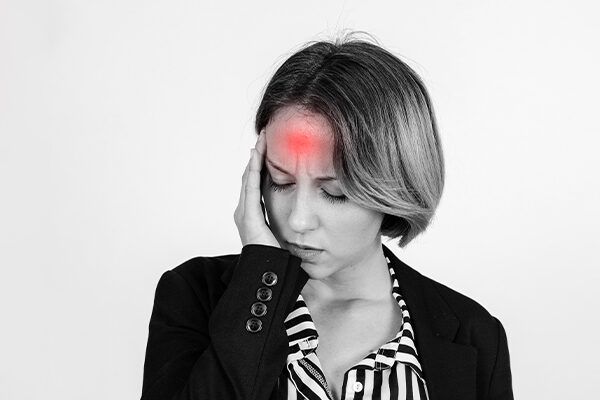Last Updated on November 15, 2022
Introduction:
How to Fight Seasonal Depression? – Seasonal depression is a type of depression majorly known as Seasonal Affective Disorder (SAD). It is often called “winter depression” because the symptoms are more noticeable and severe during the winter.
If you’re like most SAD sufferers, your symptoms begin with sapping your energy, and feeling moody, and irritated. Normally, such symptoms go away in the spring and summer.
There are treatments available that may be used to treat SAD. In this article, we will read what SAD is, how to fight seasonal depression, and what steps can be taken for its management.
What is Seasonal Affective Disorder (SAD)?
A type of depression is brought on by a change in the seasons, typically when fall arrives. This is called Seasonal Affective Disorder (SAD). Before ending in the brighter days of spring, seasonal depression gets worse in the late fall or early winter. The “winter blues” are a mild form of SAD that can also occur.
It’s normal to experience some melancholy during the winter. Given that it gets dark early, you might have to stay indoors. But complete SAD goes further than this. In contrast to the winter blues, it has an impact on your daily life, including how you feel and think.
Can Seasonal Affective Disorder (SAD) Occur During The Summer?
“Summer depression” is a rare form of SAD. It is observed less frequently than a winter-specific seasonal affective disorder.
Who is at Risk of Seasonal Affective Disorder (SAD)?
SAD affects 5% of adults in the United States. It typically begins in young adulthood (usually between the ages of 18 and 30). More often than not, it affects women.
It is more common in people who have Major Depressive Disorder or bipolar disorder. A milder form of the winter blues may affect 10% to 20% of Americans.
What Causes Seasonal Affective Disorder (SAD)?
It is still not known what specifically causes the seasonal affective disorder. But some factors that could play a role include:
Biological clock change:
Your biological clock adjusts when the amount of sunlight decreases. This internal clock monitors your hormones, mood, and sleep. You can’t adjust to changes in the length of the day when it shifts because you are out of sync with your regular daily routine.
Brain chemical imbalance:
Unbalanced levels of neurotransmitters, which act as modes of communication between nerves, can affect one’s mood and may contribute to seasonal depression. Serotonin is one of these chemicals, and it helps people feel happy. Your serotonin levels could be low already if you are prone to SAD. Wintertime darkness can make the issue worse because sunlight regulates serotonin. A further drop in serotonin levels could lead to depression.
Vitamin D deficiency:
Serotonin levels are also increased by vitamin D. Because vitamin D is produced in part by sunlight, a lack of sunlight during the winter months can cause a vitamin D deficiency. The serotonin level and your mood may be impacted by that change.
Melatonin boost:
Melatonin is a chemical that has an impact on your mood and sleep cycles. In some people, the lack of sunlight may encourage excess production of melatonin. During the winter, you might feel lethargic and sleepy.
Negative thoughts:
People with SAD frequently experience stress, anxiety, and negative wintertime thoughts. These unfavorable thoughts may either be a cause or a result of seasonal depression, according to researchers.
What are the Characteristics of Seasonal Affective Disorder (SAD)?
SAD symptoms typically start to show up in late fall or early winter and disappear during the longer, sunnier days of spring and summer. Less frequently, individuals with the opposite pattern experience symptoms in the spring or summer. In either case, symptoms could be mild at first and worsen as the season goes on.
SAD symptoms and signs include:
- Feeling drained, depressed, or down for the majority of the day
- Losing interest in things you used to like
- Feeling lethargic and low on energy
- Issues with excessive sleep
- Cravings for carbohydrates, overeating, and weight gain
- Trouble staying focused
- A sense of worthlessness or guilt
How is Seasonal Affective Disorder (SAD) Diagnosed?
Don’t try to diagnose yourself if you have symptoms of seasonal affective disorder (SAD). Consult your doctor for a thorough examination. You could be depressed for another reason. The seasonal affective disorder is frequently part of a larger mental health problem.
You may be referred to a psychiatrist or psychologist by your provider. You will be asked about your symptoms by these mental health professionals. They’ll look at your symptoms and determine whether you have seasonal depression or another mood disorder. To determine if you have SAD, you may need to complete a questionnaire.
How to Fight Seasonal Depression?
There is no known cure for seasonal affective disorder. However, if you take steps to manage symptoms as soon as they appear, you may be able to prevent them from worsening over time.
A combination of medications, psychotherapy, and light therapy may be used to manage the seasonal affective disorder.
- Light therapy: Using a special lamp, bright light therapy can help treat SAD.
- Cognitive behavioral therapy (CBT): Talk therapy includes CBT. It has the most sustained effects of any treatment strategy, according to research, and effectively treats SAD.
- Antidepressant drugs: Medical professionals occasionally advise taking antidepressants for depression, either on their own or in conjunction with light therapy.
- Spending time outside: Getting more sun can help your symptoms get better. Attempt to leave the house or go out for a walk during the day. Increase the amount of sunlight that comes into your house or place of business.
- Vitamin D: Taking vitamin D supplements may help you feel better.
Summary:
Seasonal affective disorder (SAD) is a type of depression that occurs once a year, usually during the winter. Symptoms may include fatigue and feelings of hopelessness. Fortunately, seasonal depression can be treated.
Don’t dismiss that yearly feeling as “winter blues” or a seasonal funk you must bear on your own. Take steps to keep your mood and motivation up all year!
Revive Research Institute says:
The first episode of SAD might not be something you can stop, but you can take steps to manage it better or even stop it from happening again.
If you’re struggling with depression, now is the time to take action and get a professional’s help. Our medical specialists or mental health specialists can assess your symptoms, make a precise diagnosis, and make treatment recommendations to help you feel better.




